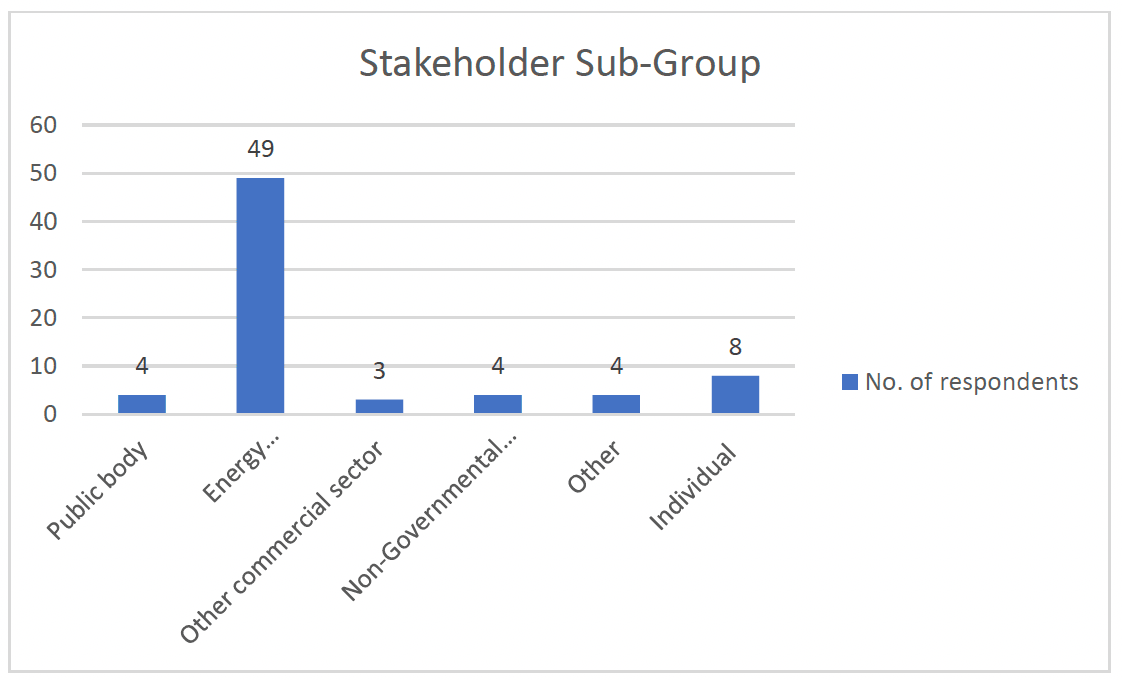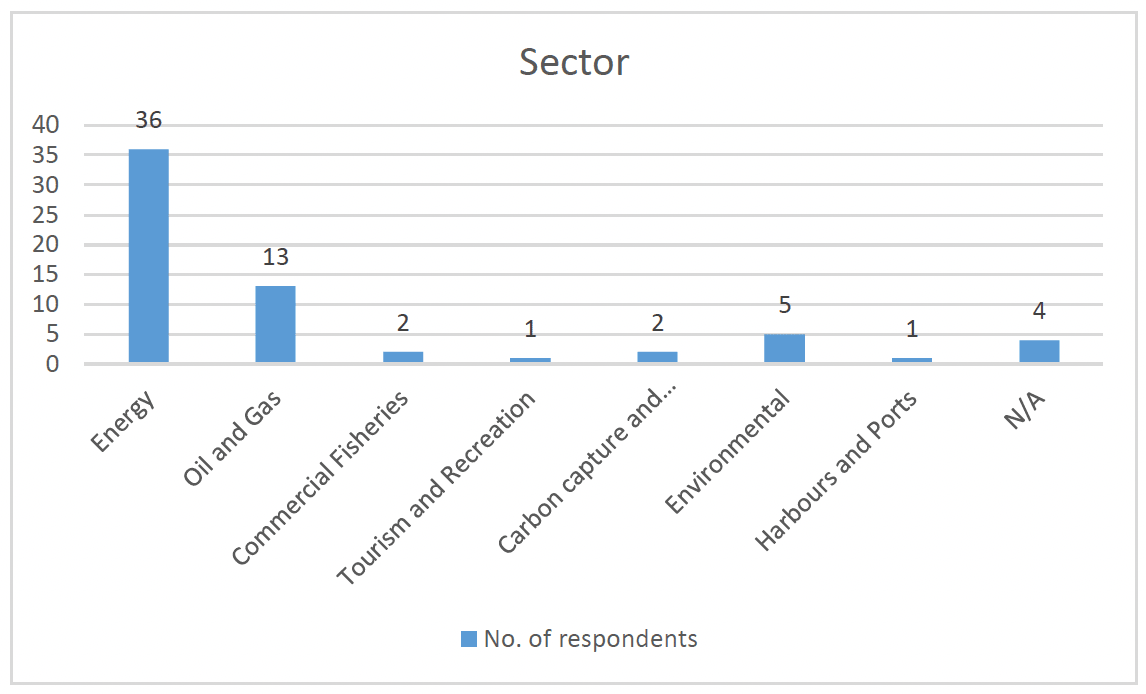Sectoral marine plan - offshore wind for innovation and targeted oil and gas decarbonisation: initial plan framework
The Initial Plan Framework (IPF) outlines the process for development of the Sectoral Marine Plan for Innovation and Targeted Oil and Gas (INTOG) Decarbonisation. The IPF also sets out the areas that will be used for future seabed leasing.
7 Consultation Analysis
7.1 The Innovation and Targeted Oil and Gas Decarbonisation Planning Specification and Context Report was published for consultation on 25 August 2021. This consultation ran until 20 October 2021 and sought responses and views on many aspects of the plan specification and particularly the Areas of Search. To gather those views and potentially additional technical information, the consultation posed four questions:
- Do you have any comments on the Plan Specification context?
- Do you have any comments on the Plan parameters/specifications?
- Do you have any comments or information you would like to provide to support or otherwise seek the removal of the Areas of Search (AoS) identified in the map included in the Plan Specification (Section 9)?
- Please use this space to provide any additional comments not captured by the previous questions.
7.2 Additionally, all respondents were invited to submit any additional data or evidence they deemed relevant to the planning process.
7.3 General information was collected including: name, organisation and contact details.
7.4 We also asked permission to publish consultation responses and gave the respondents the opportunity to opt in or opt out. Finally, we asked respondents if they could provide any comments on ways to improve our consultation process.
Respondent Profiles
7.5 In total, 71 responses were received representing 63 organisations and 8 individuals.
7.6 For analysis purposes, responses from organisational stakeholders were assigned to sub-groups and / or sectors (see Table 1) enabling analysis of the types of organisations that had responded to each of the five consultation documents.
| Stakeholder Type | Stakeholder Sub-groups | No. |
|---|---|---|
| Organisation | Public body | 4 |
| Energy company/developer/association | 49 | |
| Other commercial sector | 3 | |
| Non-Governmental Organisation (NGO) | 4 | |
| Other | 4 | |
| Individual | Individual | 8 |
| Sectors | No. | |
| Energy | 36 | |
| Oil and Gas | 13 | |
| Commercial Fisheries | 2 | |
| Tourism and Recreation | 1 | |
| Harbours and Ports | 1 | |
| Carbon capture and storage | 2 | |
| Environmental | 5 | |
| N/A | 4 |


7.7 As described in Table 2 and Table 3, the majority of responses were provided by energy organisations, either renewable developers and the extended supply chain or Oil and Gas related organisations. Given the topic of the planning process and the relatively unique opportunity being explored through this planning process, this is in line with expectations.
7.8 A variety of comments have been provided and these are described below, along with the actions taken with respect to the Initial Plan Framework. These are presented as key topics at the sector level and more general comments. Full responses will be available to view on the consultation website,[11] where permission to publish a response has been provided.
Contact
There is a problem
Thanks for your feedback